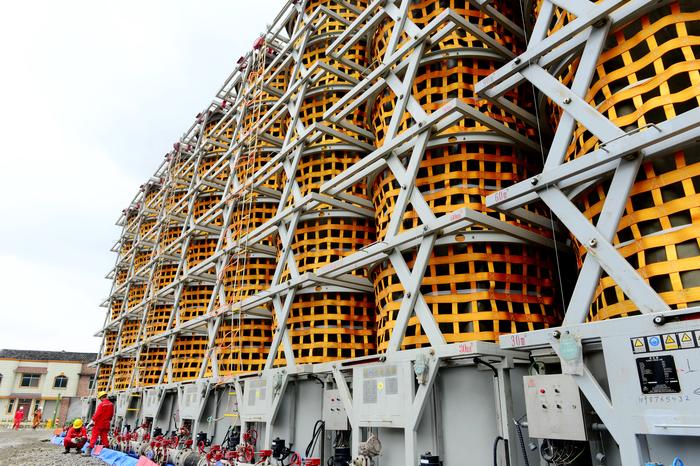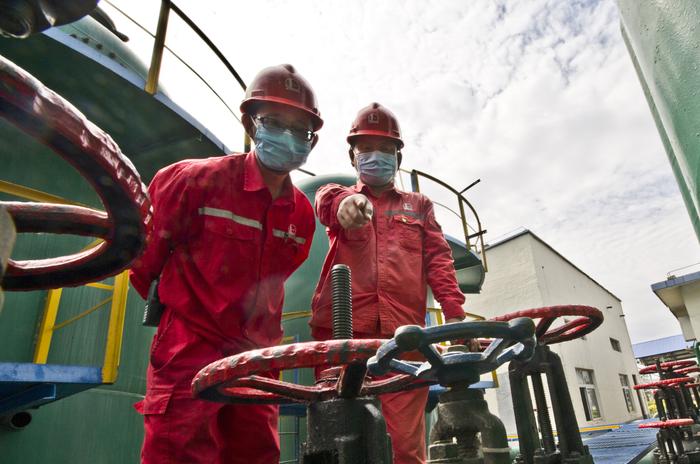|
| 2020-06-02 来源: 中国石化新闻网 |
| 石化新闻 |
|
中国石化新闻网讯 据今日油价6月1日报道,由于需求锐减,今年世界各地的炼油厂不得不减少加工。然而,下游行业出现了一个结构性问题——一波过度建设的浪潮导致了炼油产能过剩,这个问题可能会持续数年。根据国际能源署(IEA)的数据,从2019年12月到2020年3月,炼油加工量每天下降800万桶,而4月份的数据可能更糟。尽管如此,该机构在5月份的石油市场报告中写道:“没有其他确凿证据表明,炼油行业的放缓幅度足以与我们估计的需求崩溃相匹配。”IEA估计,第二季度全球炼厂日产量可能比去年同期减少1340万桶。 值得注意的是,在美国,炼油开采率似乎已经触底,并开始反弹。截至5月22日的一周,美国炼厂原油日处理量为1299.1万桶,高于两周前的1238.3万桶,不过由于市场崩盘,炼油厂的日产量仍下降了300-400万桶。汽油需求从4月中旬的531.1万桶/天跃升至5月22日的725.3万桶/天,这是需求上升的明显迹象。 然而,展望未来数周或数月的数据,下游行业面临着更大的问题。过去几年,石油行业在世界各地的炼油厂投资了数百亿美元,其中仅在2019年就投资了约520亿美元。大型炼油厂的超常扩建导致了产能过剩。 国际能源署在其《世界能源投资2020报告》中表示:“数年的投资增加,导致2019年新增炼油产能达到220万桶/天的创纪录水平。” 去年炼油产能增加了220万桶/天,与需求增长80万桶/天形成鲜明对比。 未来5年,该行业还有600万桶/天的新炼油产能正在建设中。目前,分析师们正在就“是否已经触及石油需求峰值”进行争论。即使假设需求没有达到1亿桶/天的峰值,也需要几年时间才能再次超过这一阈值。很少有人认为,到2025年,石油日需求量将增长600万桶。 因此,许多炼油厂可能会被关闭。有些公司有一定的实力,能够经受住这场风暴。国际能源署指出,中东的炼油厂因为廉价的原料而拥有“结构性优势”,而亚洲炼油厂的优势则是靠近快速增长的需求中心。 国际能源署表示,所有这些趋势——产能过剩、较弱炼油厂承受的压力以及向国家控制的转变,可能会因为2020年的危机而得到加强。短期内这种地域差异还将扩大。亚洲经济体在应对疫情方面做得更好,复苏速度也比欧洲和美国更快。这些国家的炼油厂正在经历市场状况的改善。 JBC Energy表示:“在这种艰难的环境下,更有韧性的炼油商(不仅是亚洲的炼油商)扩大市场份额的努力,可能会进一步将较脆弱的炼油商挤出市场,最终在中长期内减轻一些压力。” 王佳晶 摘译自 今日油价 原文如下: The World Has Too Many Oil Refineries At the start of the global pandemic in March, refineries around the world had to cut back on processing amid collapsing demand. However, there is a structural problem underway in the downstream sector – a wave of overbuilding has led to too much refining capacity, a problem that could linger for years. Refining processing fell by 8 million barrels per day (mb/d) between December 2019 and March 2020, according to the IEA, and data for April is likely far worse. Still, “[a]necdotal evidence from elsewhere does not point to a refining slowdown big enough to match our estimated demand collapse,” the agency wrote in its May Oil Market Report. The agency estimates that second quarter throughput could be down 13.4 mb/d, year-on-year. But in the U.S. at least, refining run rates appear to have bottomed out and have started to rebound. For the week ending on May 22, U.S. refineries processed 12.991 mb/d, up from 12.383 mb/d two weeks earlier, although they are still down by 3-4 mb/d due to the market crash. Gasoline demand jumped from 5.311 mb/d in mid-April to 7.253 mb/d by May 22, a sign of rising demand. However, looking out beyond a few weeks or months’ worth of data, the downstream sector faces a larger problem. The oil industry has invested tens of billions of dollars in refineries around the world in the past few years, including around $52 billion in 2019 alone. The extraordinary buildout of major refineries has led to overcapacity. “Several years of heightened investment led to a record amount of new refining capacity (2.2 mb/d) coming online in 2019,” the IEA said in its World Energy Investment 2020 report. The 2.2-mb/d increase in refining capacity last year stands in stark contrast to the rather weak demand growth of 0.8 mb/d. Over the next five years, the industry has another 6 mb/d of new refining capacity in the works. It’s worth remembering that this comes at a time when analysts are debating whether or not we have already hit peak oil demand. Even if one assumes demand didn’t peak at 100 mb/d on the eve of the pandemic, it will still take a few years before that threshold is surpassed again. There are very few people who see demand growing by 6 mb/d by 2025. As a result, a lot of refineries could be on the chopping block. Some have certain strengths that will allow them to weather the storm. The IEA notes that refineries in the Middle East have “structural advantages” due to proximity to cheap feedstock, while those in Asia are close to fast-growing demand centers. All of these trends – overcapacity, pressure on weaker refineries and a shift towards state control – are “likely to be reinforced as a result of the 2020 crisis,” the IEA said. The geographical disparity will also be magnified in the short run due to how the COVID-19 pandemic is playing out. Asian economies have dealt with the pandemic better and are recovering faster than Europe and the United States. Refineries in those countries are experiencing improving market conditions. “In this difficult environment, efforts by the more resilient refiners, not only in Asia, to gain market share may further contribute to pushing out the most vulnerable players, ultimately leading to some pressure relief in the medium to longer term,” JBC Energy said.
|








